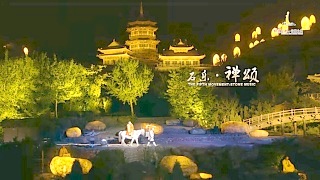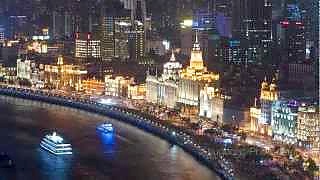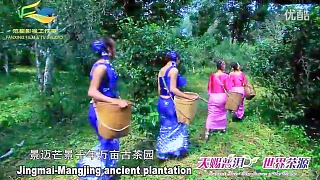From the awesome 2016 animated movie Big Fish and Begonia, directed by Liang Xuan and Zhang Chun, produced by Chinese studio B&T (Breath & Touch) in BeiJing - get it on DVD or at Netflix.
An English language cover by AirahTea ...
[320],shadow=true,start=,stop=Writer : Zhou Shen 周深
海浪无声将夜幕深深淹没
The waves silently drown out the falling of night
漫过天尽头的角落
Drifting to the outermost corner of the sky
大鱼在梦境的缝隙里游过
The big fish swims amongst the nooks and crannies of a dream world
凝望你沉睡的轮廓
Gazing Longingly at your sleeping figure
看天一色听风起雨落
Look at the sea and sky, listen to the wind and rain
执子手吹散苍茫茫烟波
Grasping your hand, the vast mist slowly disperses
大鱼的翅膀已经太辽阔
But the wings of the fish are already too vast
我松开时间绳索
I have no choice but to release the rope of time
怕你飞远去
I'm afraid you'll fly away
怕你离我而去
Fly very far away from me
更怕你永远停留在这里
Even more than that, I'm afraid you'll never leave this place
每一滴泪水都向你流淌去
Every tear I shed always flows back to you
倒流进天空的海底
Flowing backwards in time from the sky to the sea
海浪无声将夜幕深深淹没
The waves silently drown out the falling of night
漫过天空尽头的角落
Drifting to the outermost corner of the sky
大鱼在梦境的缝隙里游过
The big fish swims amongst the nooks and crannies of a dream world
凝望你沉睡的轮廓
Gazing Longingly at your sleeping figure
看海天一色听风起雨落
Look at the sea and sky, listen to the wind and rain
执子手吹散苍茫茫烟波
Grasping your hand, the vast mist slowly disperses
大鱼的翅膀已经太辽阔
But the wings of the fish are already too vast
我松开时间的绳索
I have no choice but to release the rope of time
看你飞远去
I watch you fly away from me
看你离我而去
Fly very far away from me
原来你生来就属于天际
It seems you belong to the stars and the skies
每一滴泪水都向你流淌去
Every tear I shed always flows back to you
倒流回最初的相遇
Flowing back in time to the very first moment I saw you
倒流回最初的相遇
Flowing back in time to the very first moment I saw you
AirahTea's translation :
As the night begins, the sea takes quietly
All the silent darkness of the sky.
In my dream I see the fish swim gracefully,
Gone as soon the sun begins to rise.
Hear the rising wind. See the falling rain.
Take my hand and I'll wash away the pain.
Spread your wings, my dear. Don't be scared to grow.
It is time for me to let you go.
I am scared to see you fly far from me.
But I fear even more if you stay here.
All the pain I feel, every tear that I cry
Flows reversed from the sea to the sky.
As the night begins, the sea takes quietly
All the silent darkness of the sky.
In my dream I see the fish swim gracefully,
Gone as soon the sun begins to rise.
Hear the rising wind. See the falling rain.
Take my hand and I'll wash away the pain.
Spread your wings, my dear. Don't be scared to grow.
It is time for me to let you go.
As I see you fly, leaving me here behind.
I could see, you were never mine to keep.
All the pain I feel, every tear that I cry
Flows reversed to when we said goodbye.
 A beautiful song – ‘Big Fish’ 大鱼
A beautiful song – ‘Big Fish’ 大鱼




















